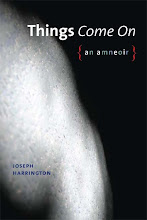But the allusions to Kansas do not. It becomes a Kansas of the mind - as tho it and Oz were reversable. St. Jacob's Well, a natural spring near his hometown of Ashland, that was a beacon to travelers across the semi-arid western Kansas plain, becomes a mythical place for him -- as does Big Basin, a mile-wide hydrologic depression of the earth that becomes the caldera of a volcano in ARK 47. "The country was round, as if/ a man should imagine himself in a bowl, & could see sky/ at its edge" ("Quivera").
But the upshot is that Kansas really was El Dorado, tho Coronado didn't get it. For Johnson, however, there is always the compulsion to transmute the physical into metaphysical, via language:
'between a microscopic & a telescopic
world',
the twigged, brancy writing
of frost, spider & galactic cluster. That the syllables!
-- rock & flower & animal
alike --
among the words,
make Order. ("Four Orphic Poems")
Or, the "common Kansas/ sunflower - / Helianthus,/ . . . it wheels like/ skies of a shaggy, & many-headed,/ sun" - which it does do and is like (Johnson's sunflower is so much more eloquent than Ginsberg's). "Mayse, my mother's/ family name/ & had it crest, Maize" later links to the Kanza, those "growers of maize" whose "crest was a human hand// & in the palm of it/ an eye:" (end of poem - "Of Circumstance"). Maybe it's that history and imagination, making and seeing are one for him:
But are these landscapes to be imagined,
or an actual
Kansas - the eternal, earthy, prosaic core of us?
. . .
All is Oz.
the dusty cottonwoods, by the creek
rustle an Emerald City.
And the mystic, immemorial city
is rooted in earth.
All is Oz & inextricable,
bound up in the unquenchable flames of double suns.
("Letters to Walt Whitman")












